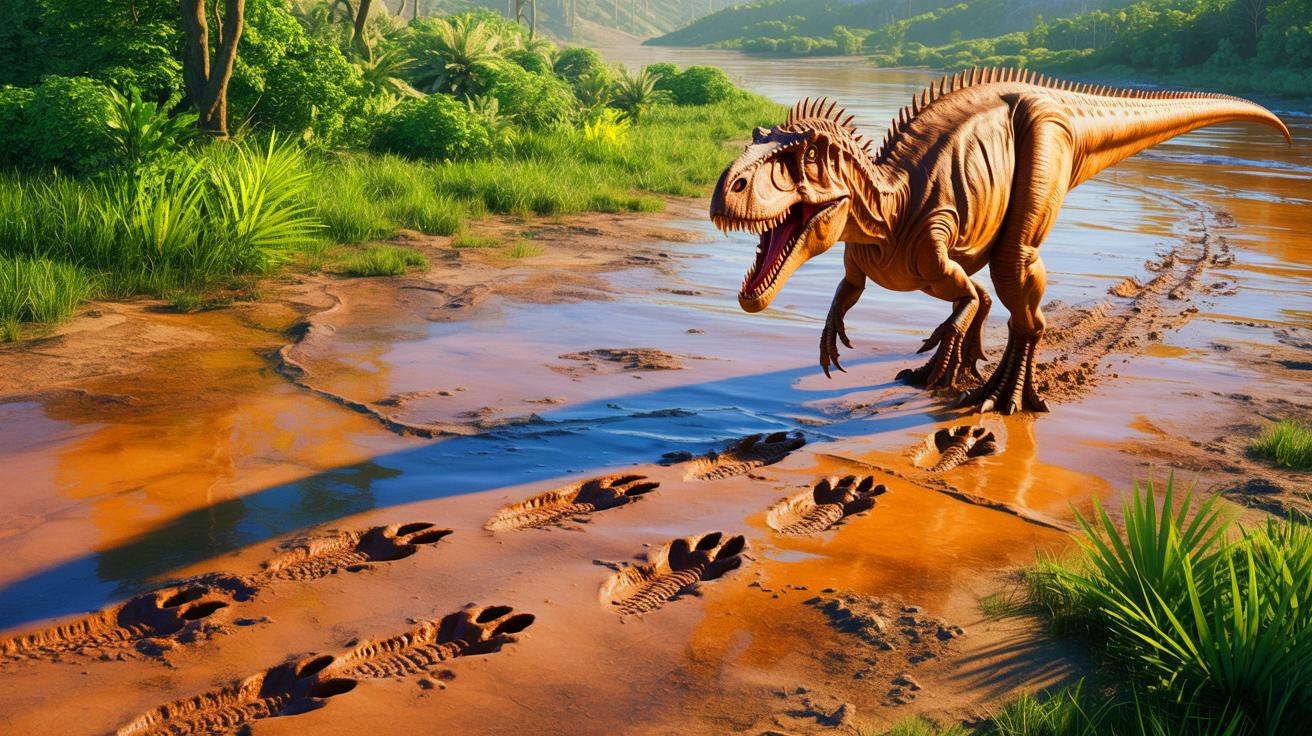| IN A NUTSHELL |
|
The fascinating world of dinosaurs has always captured our imagination, painting vivid pictures of these magnificent creatures roaming the Earth. Recent research challenges some of our long-held beliefs about dinosaur speed. A study from Liverpool John Moores University provides new insights into how these ancient giants might have moved. By analyzing fossil trackways and comparing them with modern birds, scientists have unveiled surprising findings about dinosaur locomotion that could reshape our understanding of their behavior and lifestyle.
Fossil Trackways: A Window into Dinosaur Movement
Fossil trackways have long been a vital tool in understanding the behavior and locomotion of extinct animals. These preserved footprints offer a glimpse into how dinosaurs might have moved across varied landscapes. However, new research suggests that our previous interpretations of these trackways might have been flawed. Traditionally, calculations of dinosaur speeds were based on equations derived from mammalian data. This approach failed to account for the unique conditions under which these tracks were made.
The Liverpool research team focused on theropods, one of the three major dinosaur groups. They discovered that trackways made in soft, muddied surfaces could significantly distort recorded speeds. In fact, the original equation by R. McNeill Alexander, used for decades to estimate dinosaur speed, was based on data from living animals moving on hard surfaces. The study reveals that speeds calculated from trackways on softer substrates might be dramatically overestimated.
James Webb Telescope Unlocks the Deep Structural Secrets of Disk Galaxies, Revealing How the Universe Built Its Greatest Shapes
Modern Birds Reveal the Secrets of Dinosaur Locomotion
To test their hypothesis, researchers turned to modern birds, specifically the helmeted guineafowl. This bird was chosen because of its similarities to non-avian theropods like Velociraptor. By observing the guineafowl moving across different types of mud, scientists gained valuable insights into how substrate consistency affects trackway formation and perceived speed.
High-speed video recordings of the guineafowl’s movements provided a wealth of data. The researchers found that the bird’s trackways, when analyzed using Alexander’s formula, significantly overstated their actual speed. This finding suggests that many dinosaur trackways might have been misinterpreted, leading to erroneous conclusions about their pace and behavior. The study emphasizes the need to consider the substrate’s role in trackway analysis, which could lead to more accurate reconstructions of dinosaur movement.
“We’re Finally Hunting Aliens for Real”: James Webb Telescope Begins Deep-Space Search for Signs of Extraterrestrial Life
Reconsidering Dinosaur Speeds and Behavior
The implications of this research are far-reaching. If dinosaur speeds have been overestimated, it could alter our understanding of their behavior, including predator-prey dynamics and migration patterns. For example, a theropod trackway previously thought to indicate running might actually represent a walking pace. Similarly, a large ornithopod moving leisurely could have been mistakenly classified as running.
This new perspective encourages scientists to reassess previous speed-based behavioral reconstructions. The research suggests that while some dinosaurs likely did run, the speeds at which they did so might have been much slower than previously believed. The team advocates for using trackway data to make broad comparisons of relative speeds rather than specific velocity estimates. This approach could lead to a more nuanced understanding of dinosaur ecology and their interactions with the environment.
“Earthquake Moves in Slow Motion”: Scientists Capture Rare Seismic Event Crawling Miles Over Weeks Beneath Earth’s Surface
The Future of Dinosaur Locomotion Studies
While this study sheds new light on dinosaur locomotion, it also highlights the limitations of current research methods. The researchers acknowledge that their guineafowl model might not fully represent the dynamics of larger dinosaurs moving on different substrates. They call for further studies across a range of body sizes and sediment types to refine our understanding of dinosaur movement.
Without additional research on modern animals moving on compliant substrates, calculating precise speeds from fossil trackways remains challenging. The study concludes with a call for more comprehensive investigations, emphasizing the importance of integrating data from extant taxa to enhance our interpretations of extinct species. Such efforts could pave the way for more accurate reconstructions of dinosaur locomotion and contribute to our broader understanding of ancient ecosystems.
As we continue to unravel the mysteries of these ancient creatures, one thing remains certain: our quest to understand dinosaurs is far from over. This study is a reminder that science is ever-evolving, and each new discovery brings us closer to the truth. How will future research reshape our perception of these magnificent giants? What other surprises lie hidden in the fossil record, waiting to be uncovered?
Our author used artificial intelligence to enhance this article.
Did you like it? 4.4/5 (25)
